The Louis Vuitton Tambour Convergence, a New Take on the Guichet Display
Inaugurating the brand's new in-house automatic movement, LV reinterprets the "montre à guichet" concept.
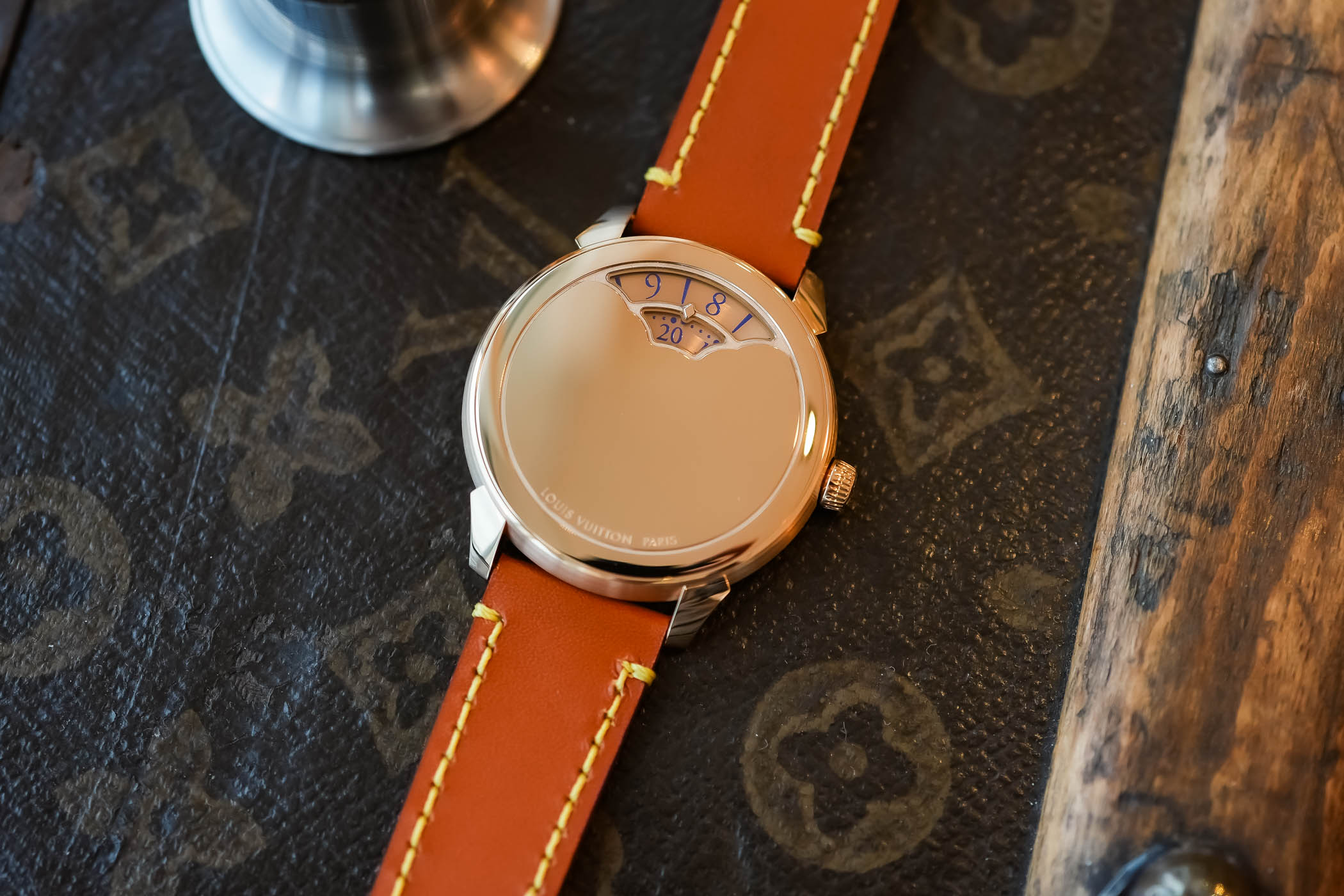
While the redefinition of the Tambour in 2023 and the work done on the Escale in 2024 were somehow expected and natural developments for the watch division of Louis Vuitton, this year’s run of new models is more exotic, to say the least. First and foremost was the work done to revamp the emblematic Spin Time collection, which is explained extensively in this article. Second is this new Tambour Convergence. Inspired by the bygone era of the montres à guichet (watches with apertures/windows) and with an evident Art Deco touch, it’s also an important and strategic novelty that comes with a brand new in-house automatic movement – the same base as the new Spin Time, destined to become a future standard for upcoming developments.
While the word Tambour in the name is certainly easy to understand coming from Vuitton, Convergence needs a bit more explanation, as it doesn’t immediately refer to the watch, its design or its display. It is actually a tribute to a convergence of crafts, as the watch is the result of the joint expertise of the Louis Vuitton ateliers in Geneva – La Fabrique du Temps (movement design), La Fabrique des Boîtiers (case-making), and La Fabrique des Arts (rare handcrafts). The Tambour Convergence is all about the unification of in-house skills.
What is this Louis Vuitton Tambour Convergence all about? Well, it’s a bit of an oddity, a watch that’s deliberately delicate, small, almost outdated and yet precious. It’s not a highly practical watch; it doesn’t have hands or a dial. The Tambour Convergence is a homage to the montres à guichet from a bygone era, with the classic Art Deco theme reinterpreted with the modernized elegance of the Tambour case – even if the latter has been transformed once more to adopt a more elegant and slender look.
The Convergence relies on a redefined Tambour case, with its characteristic and prominent drum-shaped profile reduced to 8mm in thickness, with sculpted lugs that are manufactured separately from the case, with polished top surfaces and micro-sandblasted inner areas. The profile of the central drum is horizontally brushed, while the top of this closed case is entirely polished by hand – beware, it will be fragile. The 37mm case is deliberately compact – following a certain trend for smaller, more design-oriented and precious watches.
Two editions of the Tambour Convergence will be available. The first has a classic 18k pink gold case with matching hours and minutes discs, secured to the wrist by a typical LV strap in camel calf leather, with a beige calf leather lining and yellow stitching. The second edition is made of 950 platinum, and the top surface of the case is set with 795 snow-set diamonds. The Tambour Convergence in platinum utilises stones in a range of seven sizes and requires 32 hours of meticulous work to complete. This version uses rhodium-plated discs and is worn on a blue calf leather strap.
What’s special about the Louis Vuitton Tambour Convergence is its display, which is a tribute to old montres à guichet – watches with apertures. As such, the upper part of the closed dial features two arched windows, partially revealing the two discs rotating underneath. The hours rotate clockwise through the upper arched guichet, and the minutes occupy the lower arch with a gold or platinum lozenge positioned between the two to indicate the time. On both versions, the discs feature blue printed Arabic numerals. While we can surely appreciate the distinctive design and the undeniable retro charm of this watch and its display, I would have liked it to come with jumping hours. Instead, the Tambour Convergence uses two dragging discs – which isn’t really an issue with the minutes but is always a bit confusing with the hours discs.
Perhaps the most important element of the Tambour Convergence isn’t its design or display but what lies under the sapphire caseback: a brand-new in-house automatic movement with a central rotor. While the self-winding, micro-rotor movement of the 2023 Tambour, also found in the revamped Escale, was made with Le Cercle des Horlogers, the calibre LFT MA01.01 is the result of an internal development, with parts manufactured in-house (some components are sourced from external suppliers, such as the escapement from Atokalpa) with final assembly and casing done at La Fabrique du Temps. This movement shares its architecture with the base calibres used in the new Spin Time collection. This important step for the brand will also be used as a technical base for the future.
We are looking at a compact movement with a solid 18k gold central rotor, presented here in a time-only version to power the two discs on top. It features a high-end regulating organ with a free-sprung balance equipped with high-precision inertia blocks, beating at a modern 4Hz frequency. The power reserve is 45 hours. The decoration is in line with what’s been seen on the Tambour, including sandblasted bridges with micro-sandblasted edges, perlage on the main plate, polished bevels, an LV motif on the periphery of the rotor and colourless jewels instead of conventional magenta synthetic rubies.
Released as a part of the permanent collection, the Louis Vuitton Tambour Convergence in gold will be priced at EUR 37,000, while the diamond-set platinum edition will come at EUR 67,000. For more details, please visit LouisVuitton.com.

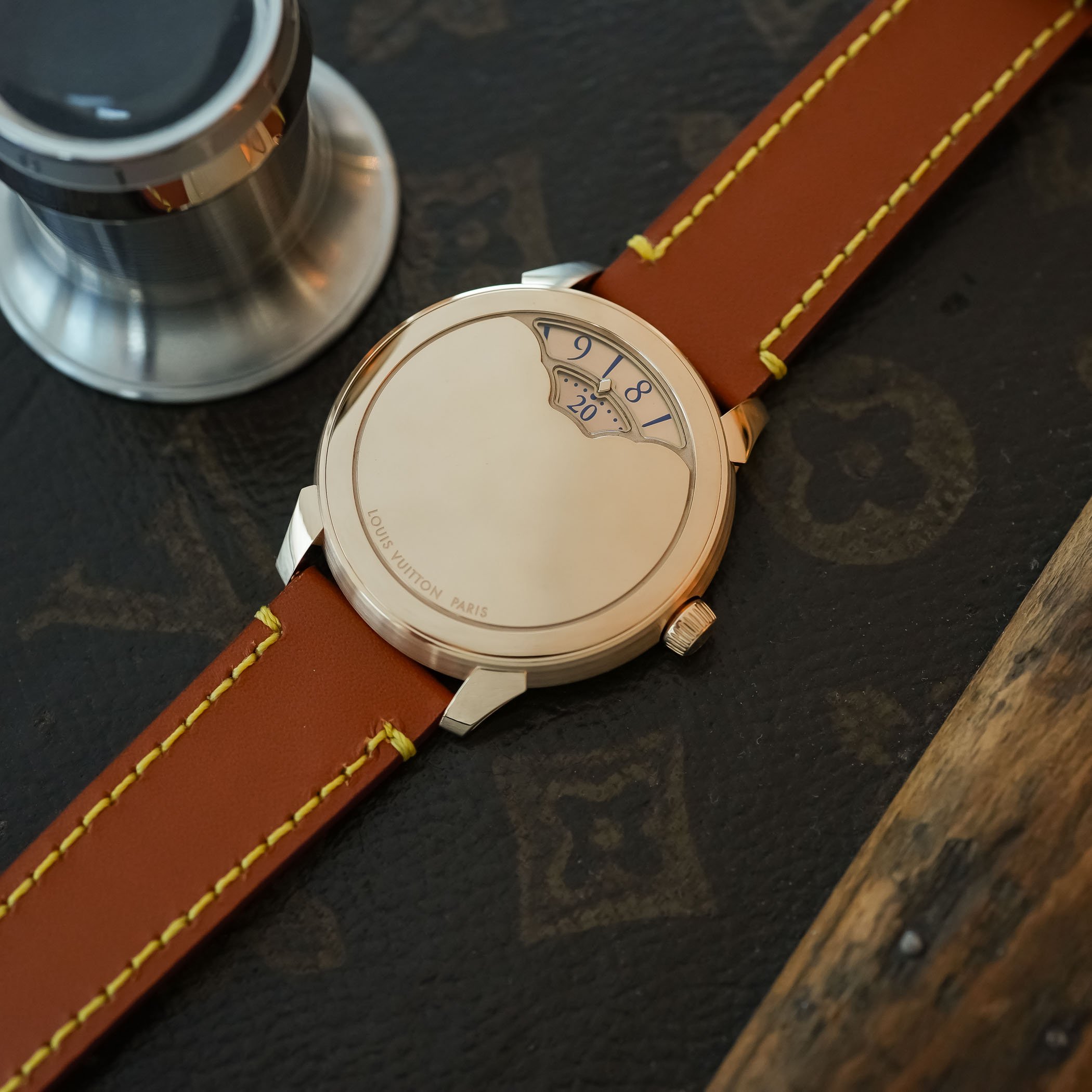
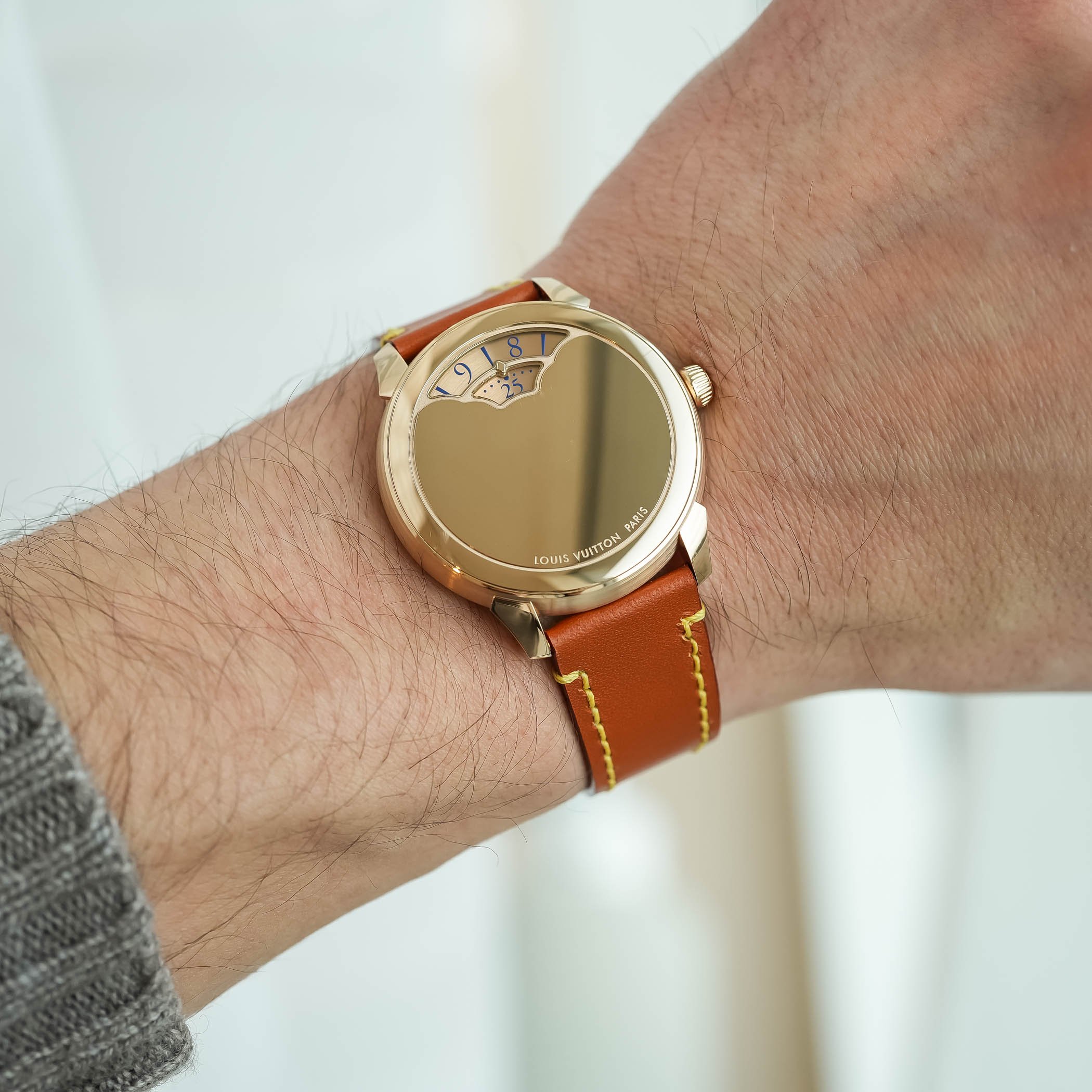
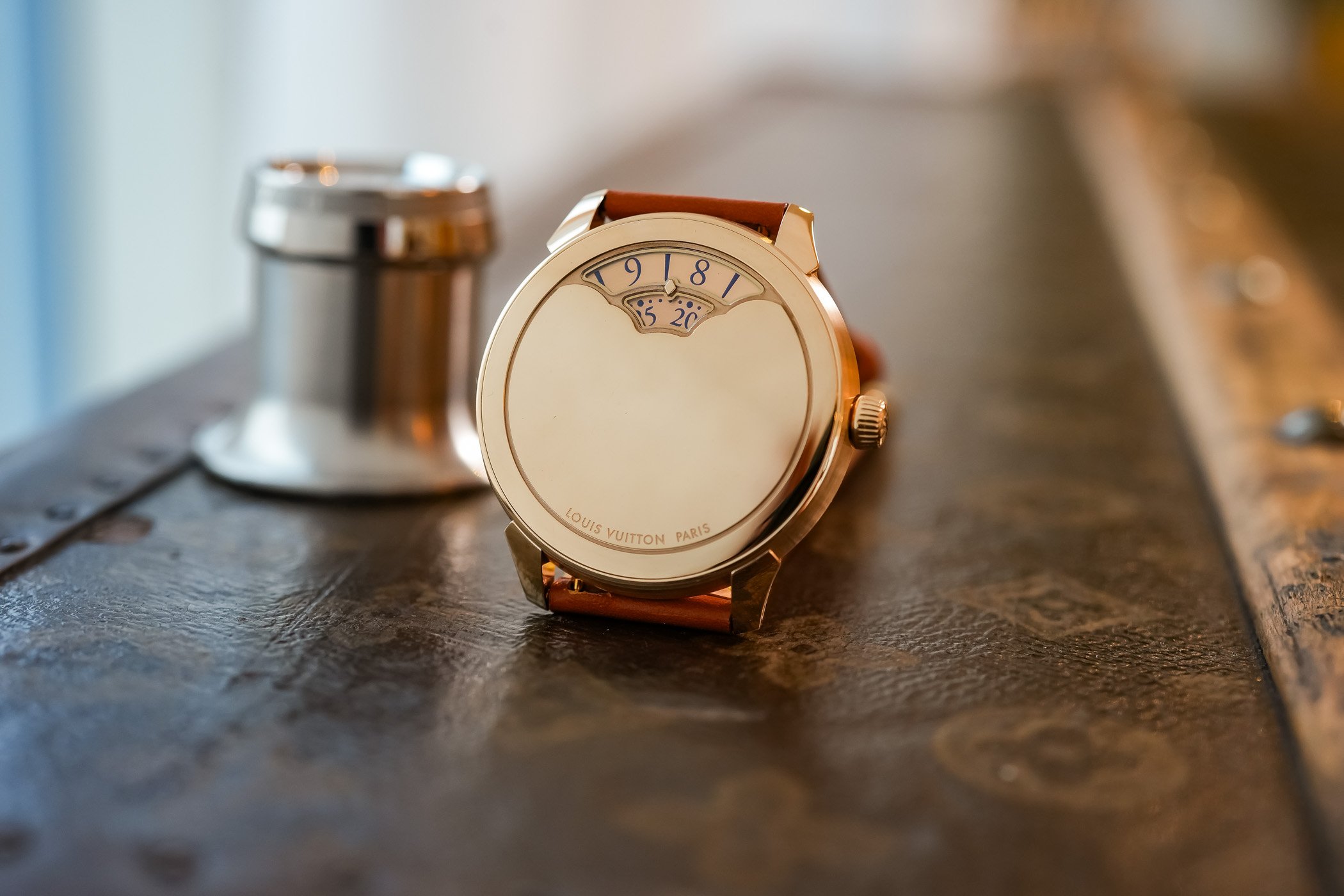
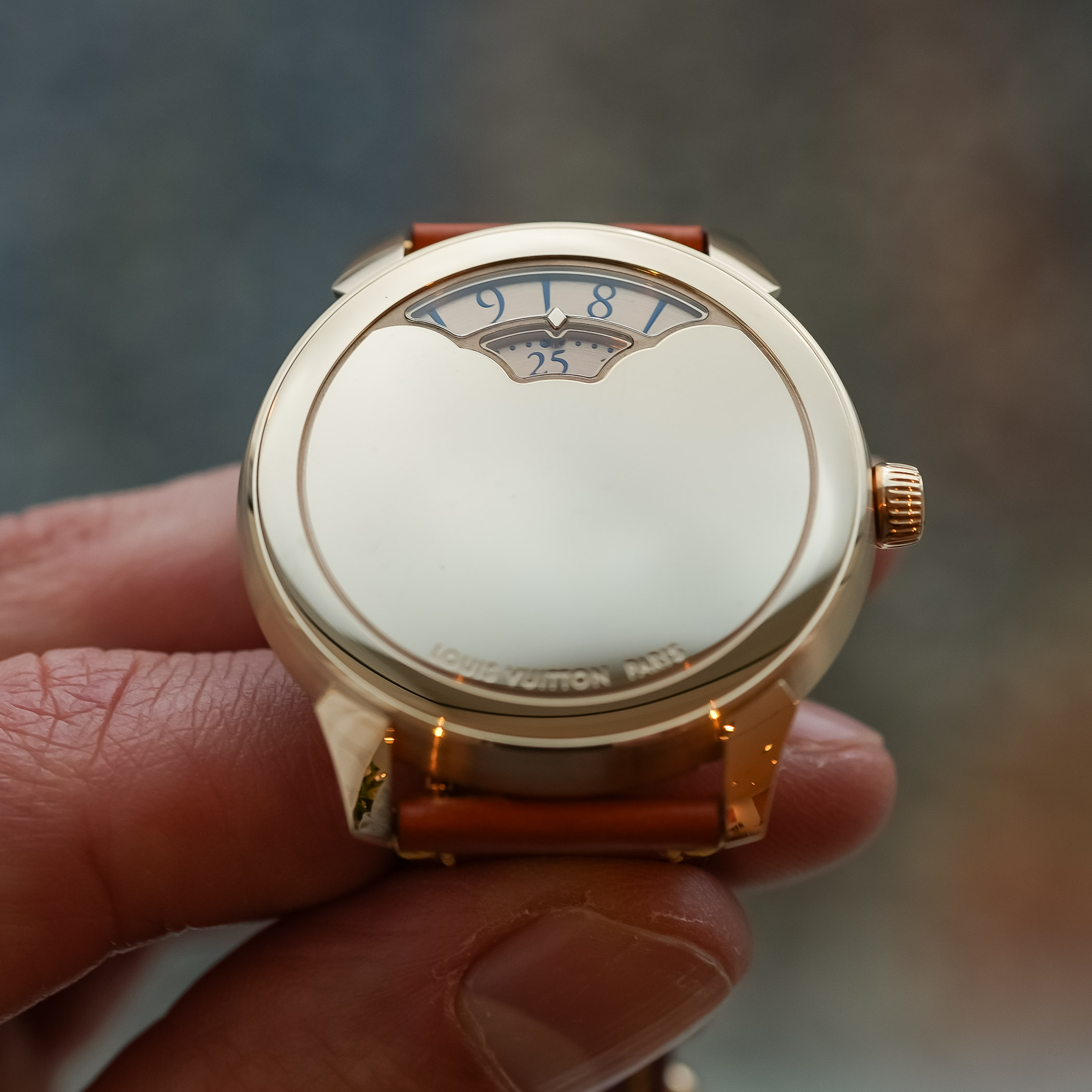
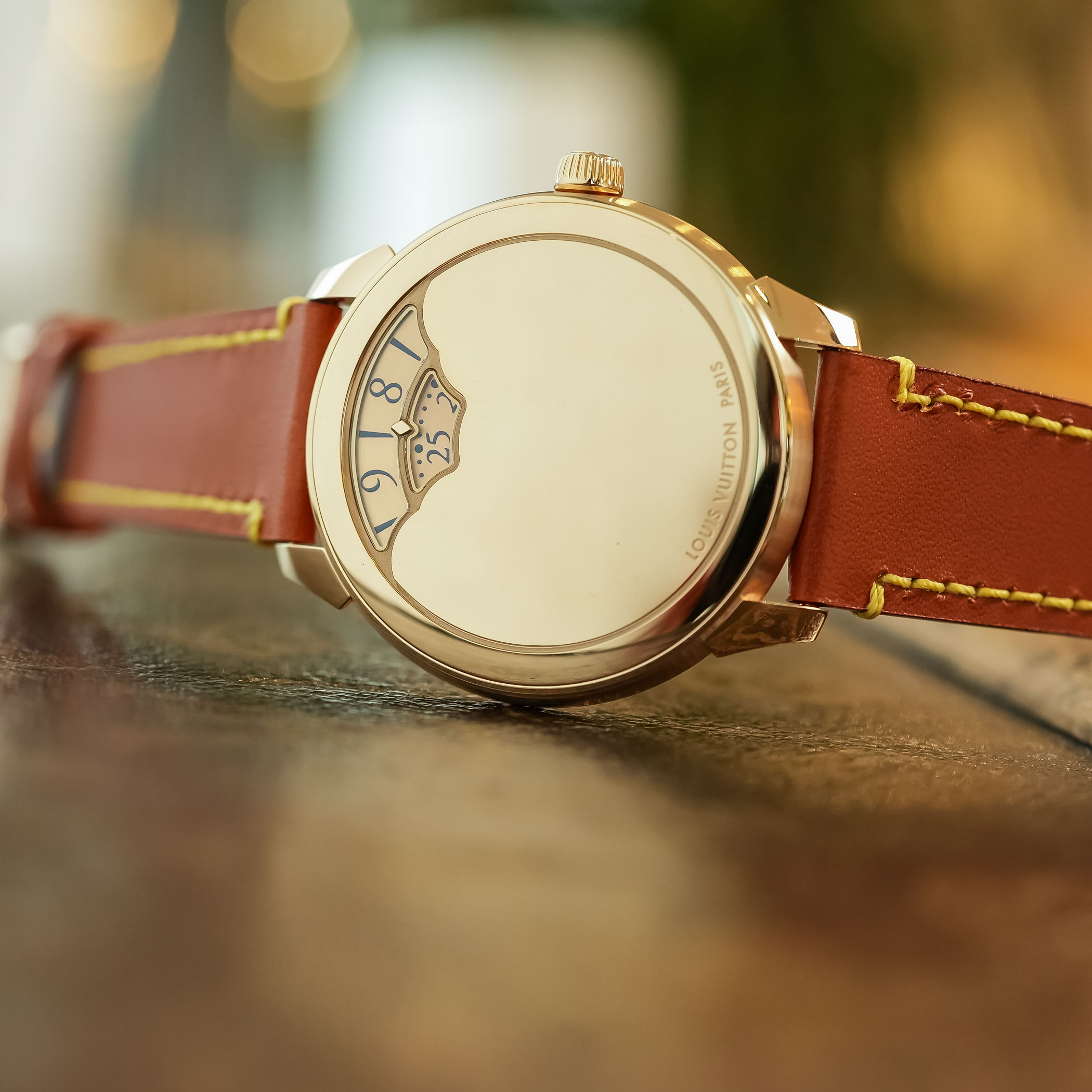
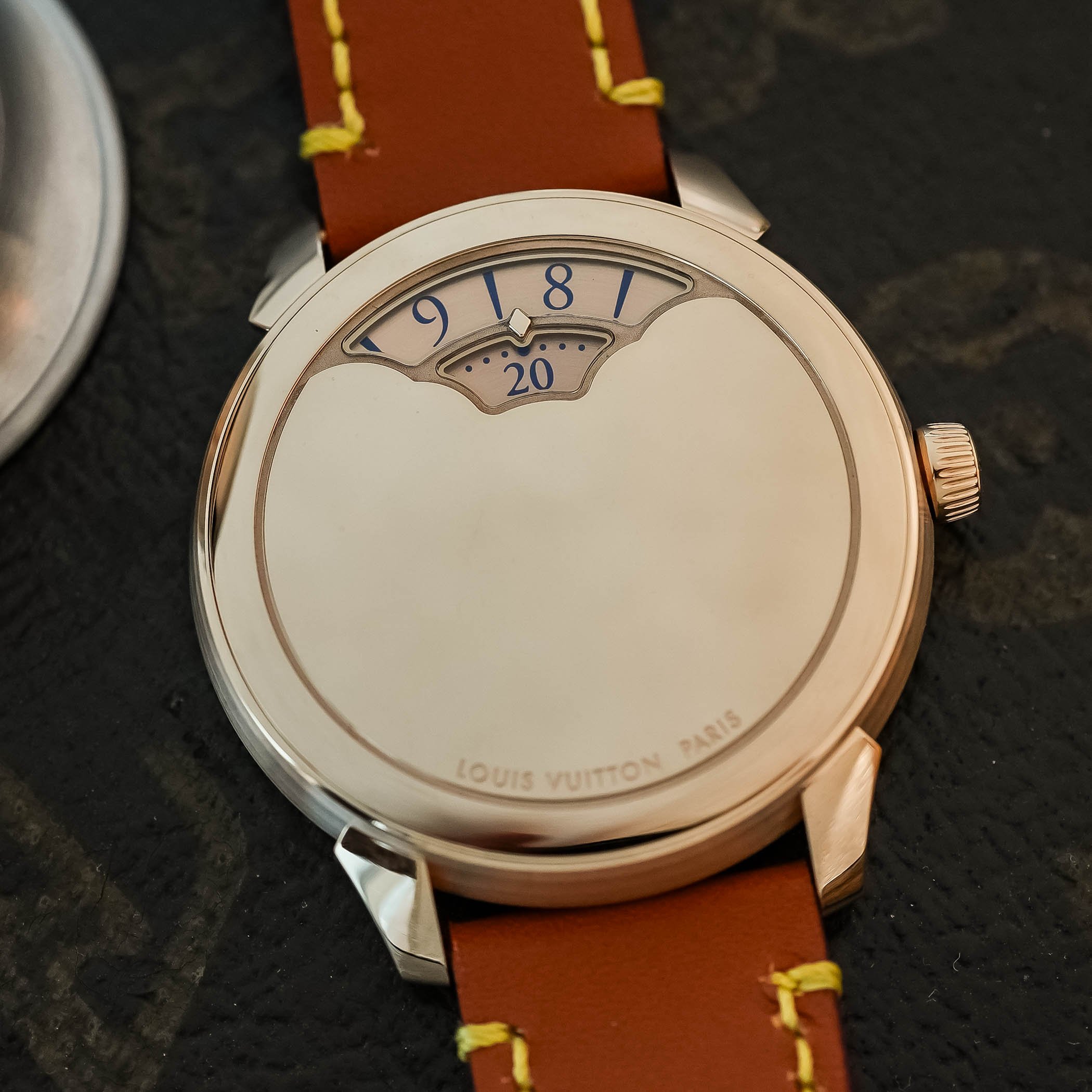
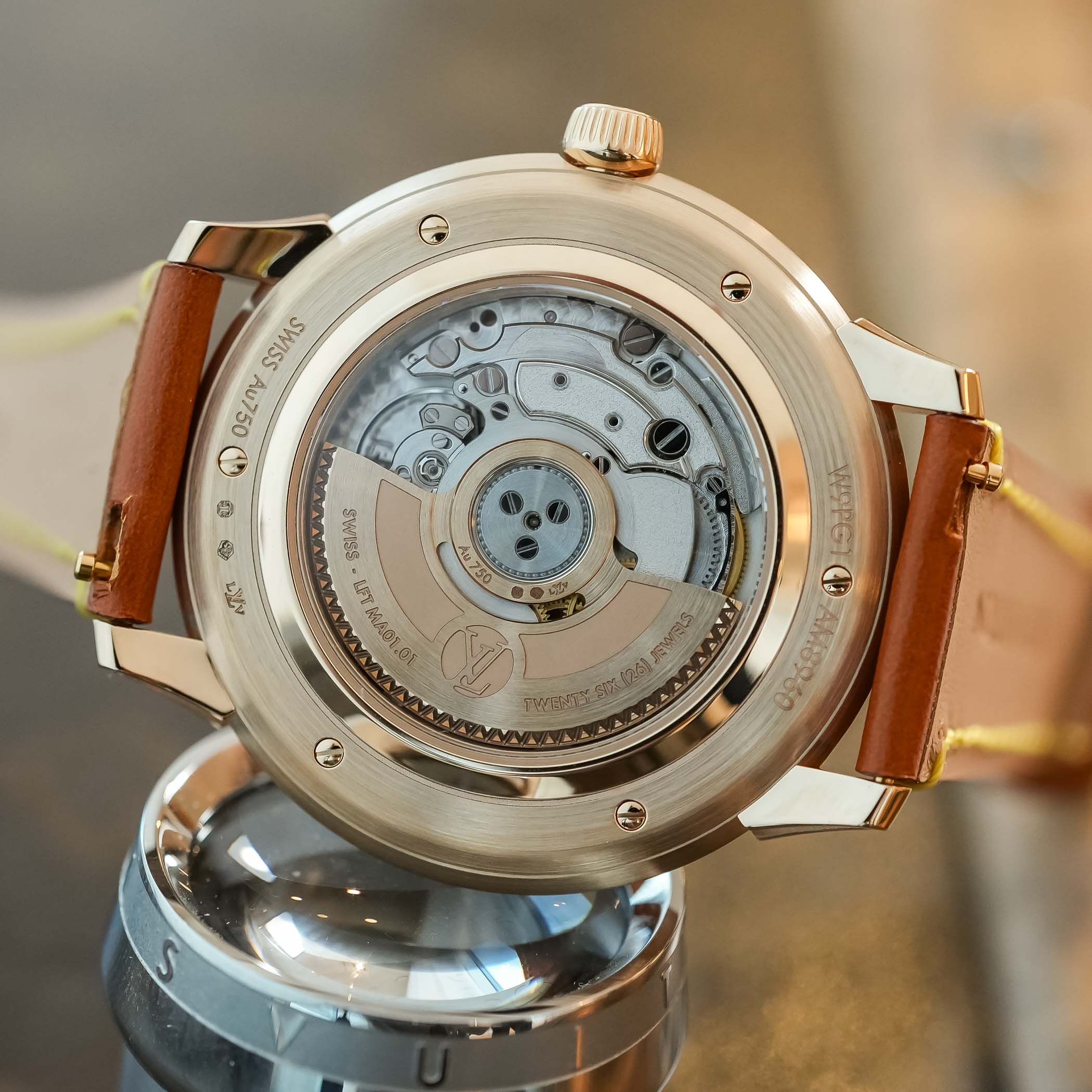
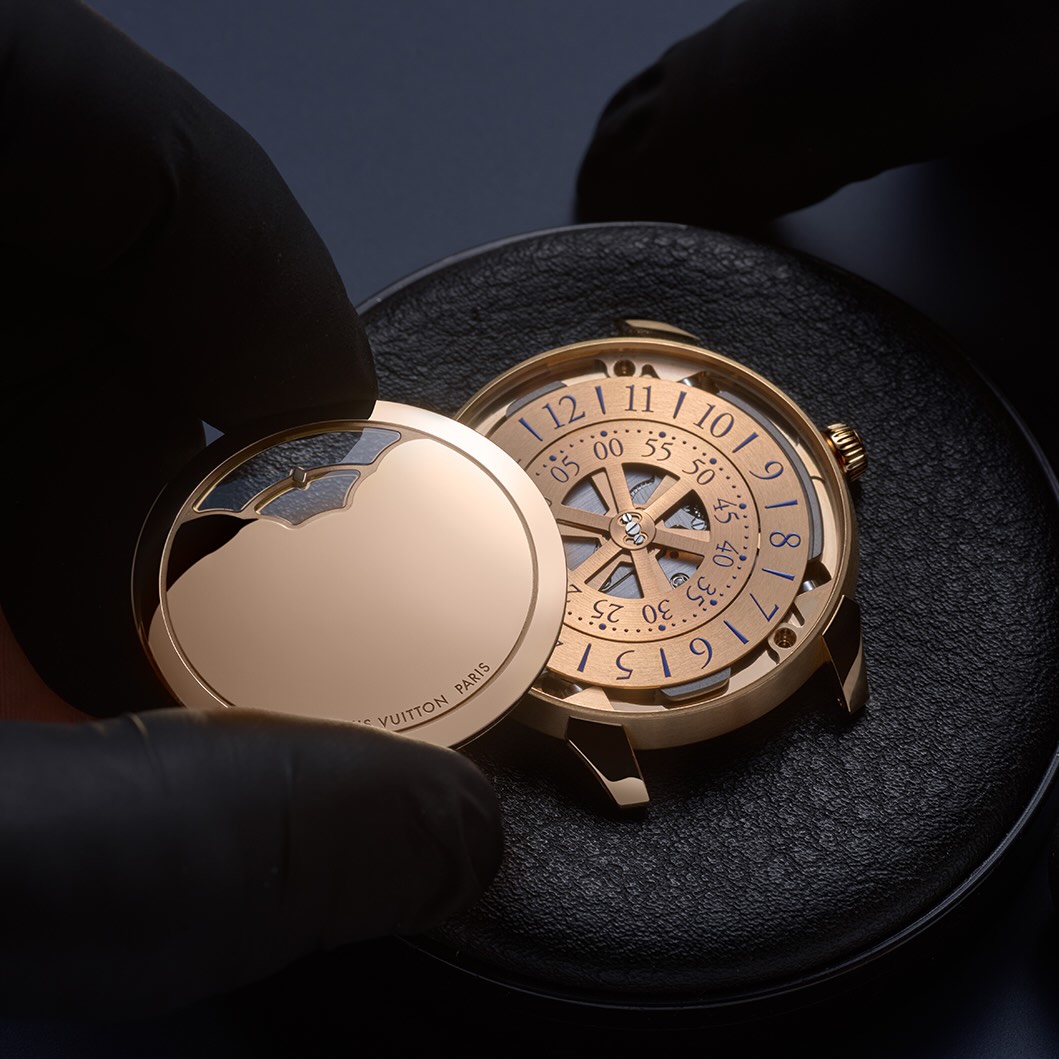
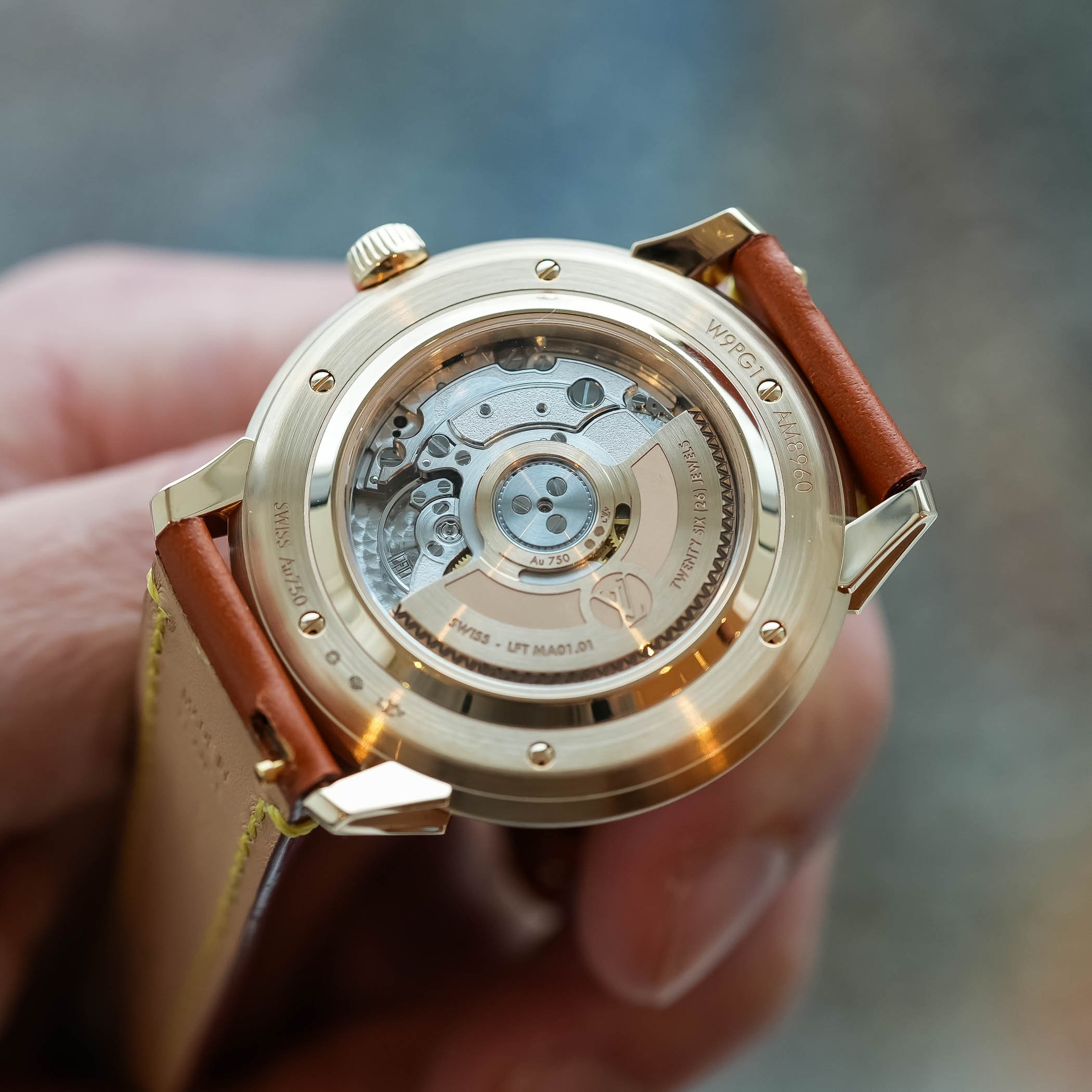
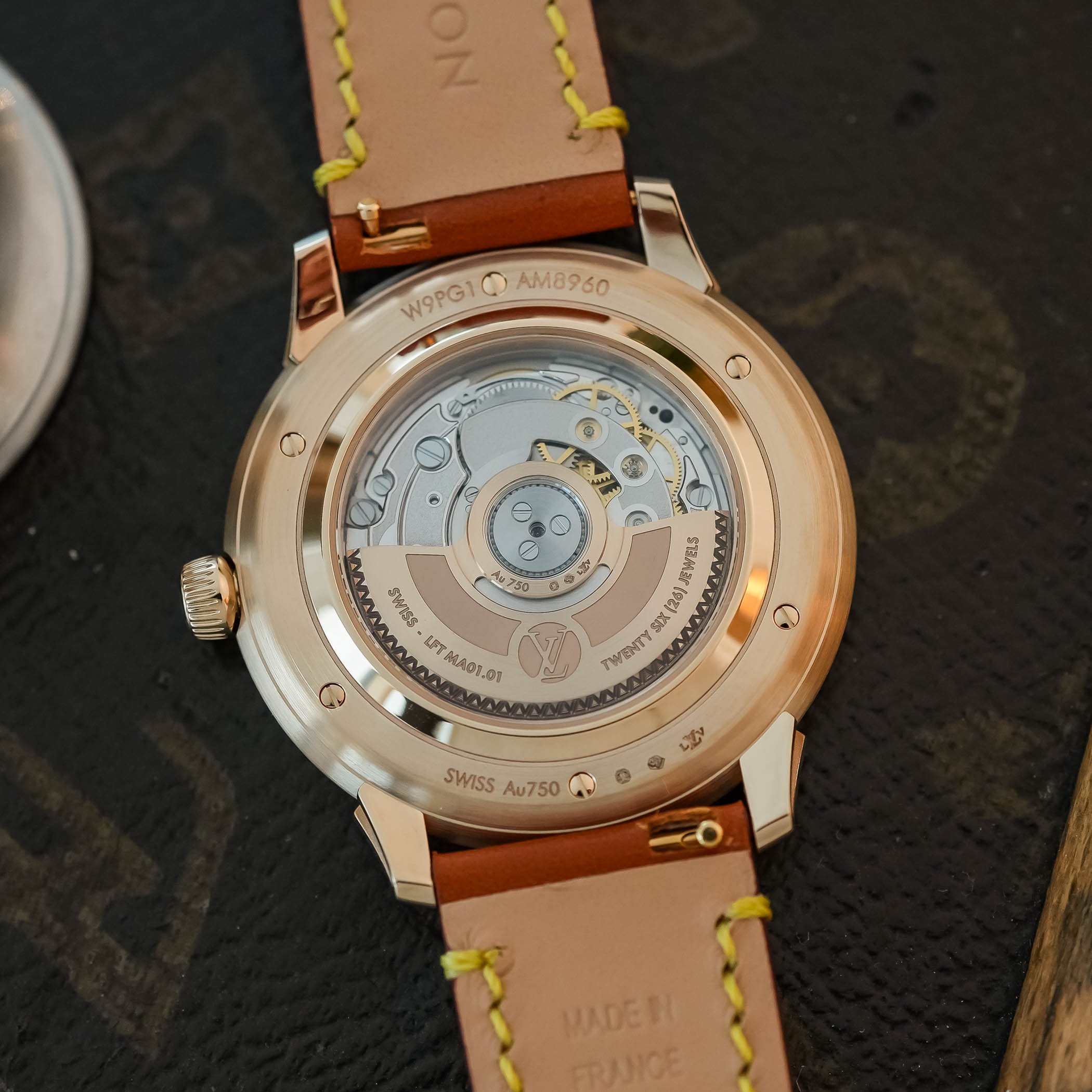
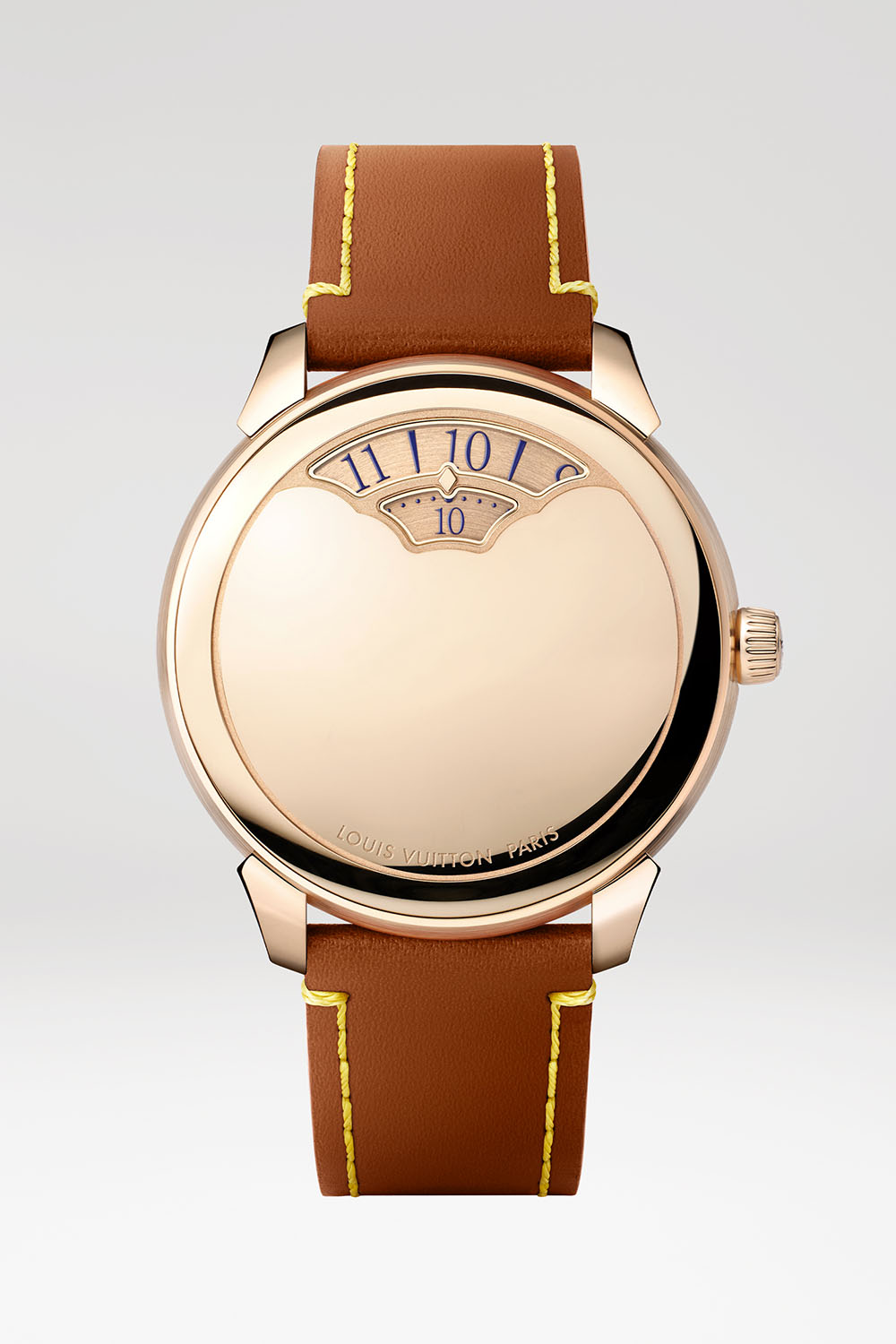
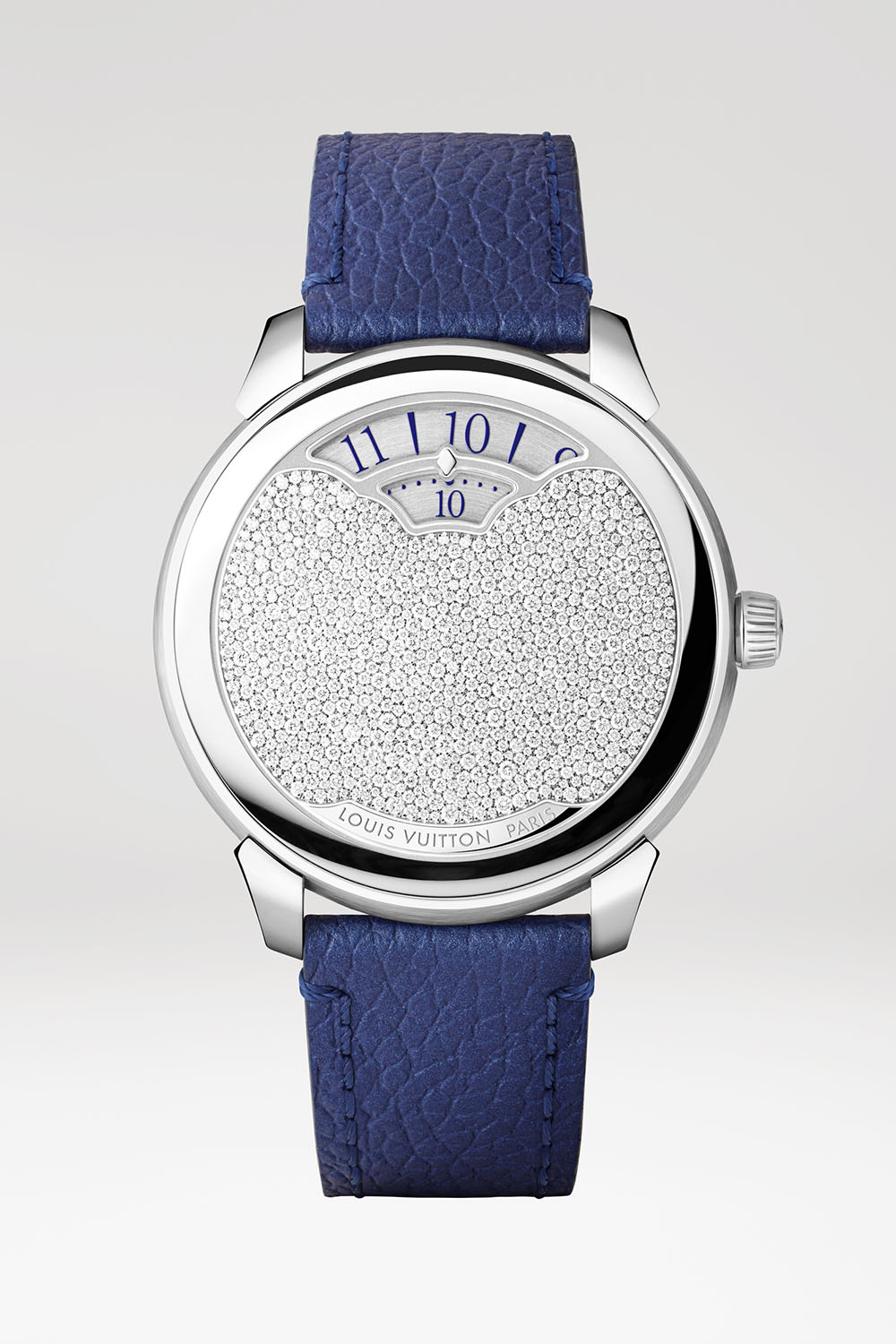

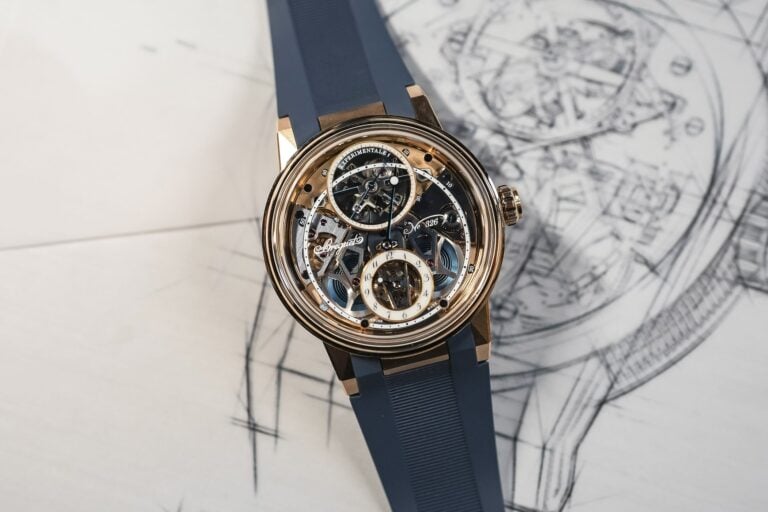
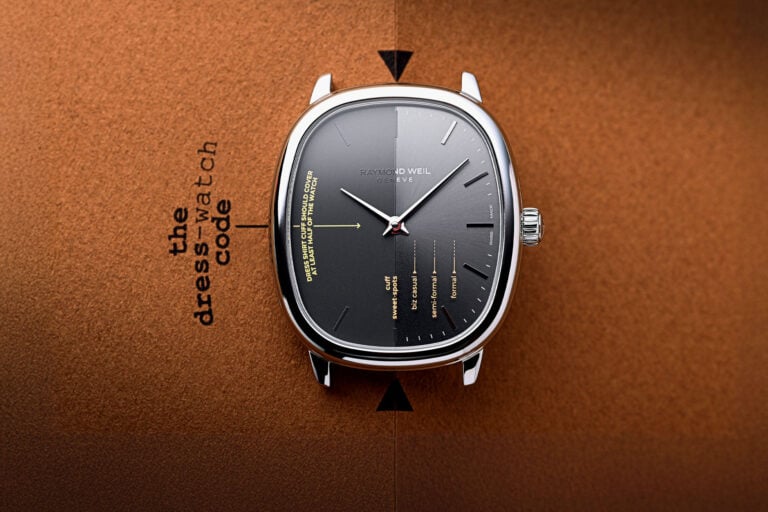
5 responses
Someone at LV is having fun, and I’m all for it.
@ Hubertje – let’s assume that working for LV Watches currently must be quite exciting indeed!
Lovely, interesting, very, very pretty… very unusually pretty for LV.
I bet this is not the watch Mr Arnault of LV presented to the certain someone when he attended this someone’s inauguration a couple of days ago…
While not for me, I like it for being different.
As a rule of thumb, I only collect watches with at least two traditional hands for hours and minutes. But this particular watch somehow intrigues me very much, not that I haven’t seen watches with mechanical digits indications before. The only problem for the gold version is that it’s just a big waste of the space on the dial, or the cover of the dial, except for having it served as a mirror when the user needs to have some quick touch up of the makeups. Just curious why no any info could be found about the beautiful guilloché version, possibly a piece unique? Or perhaps the picture of it once found on the web was an unintentional leak?